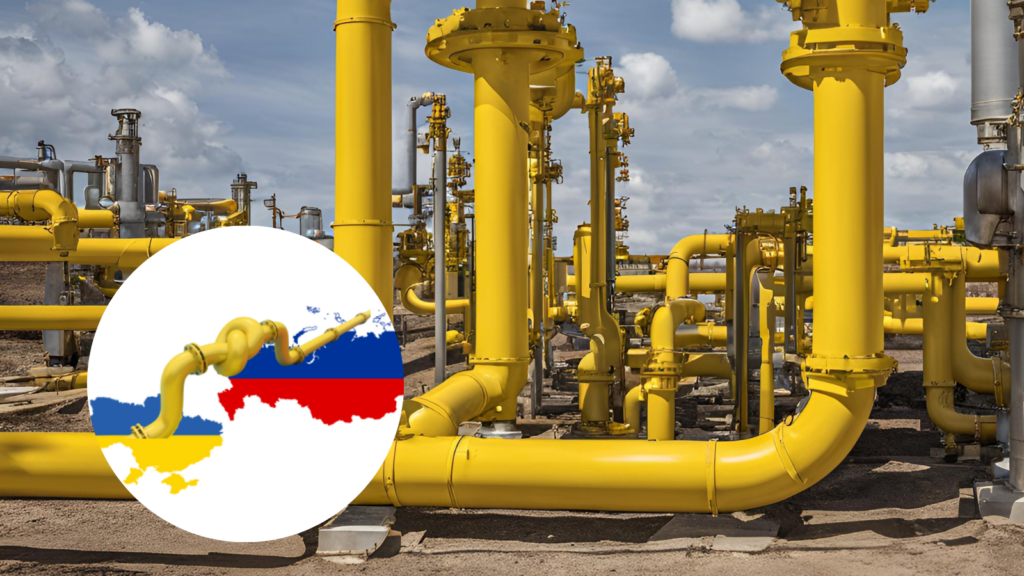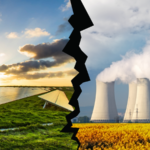As Europe grapples with the ongoing energy crisis, the recent suspension of natural gas supplies from Russia, starting in January 2025, has added further strain to an already fragile situation. The expiration of the Russia-Ukraine natural gas transit agreement has led to a significant disruption in energy flows, with far-reaching economic and geopolitical consequences for several European nations. Below are the key developments:
1. Energy Price Increases in Italy and the Netherlands
- Italy: Due to ongoing geopolitical tensions and low winter temperatures, the Italian energy network and environmental agency announced an 18.2% increase in electricity prices for Q1 2025, affecting 3.4 million households, especially vulnerable groups like those over 75 and disabled residents. Further price hikes of up to 30% are expected, and the average household could pay an additional €230 in gas costs next year.
- Netherlands: Natural gas prices in the Netherlands have surged to their highest point in over a year, rising from €30 per MWh in early 2024 to approximately €50 per MWh. Experts predict that prices will remain high due to continued disruptions in Russian gas supply, LNG market shortages, and adverse weather conditions.
2. Germany’s Response
- On January 2, German Left Party politician Dietmar Bartsch urged the government to take immediate action by repairing and restarting the Nord Stream pipeline to alleviate the natural gas shortage.
3. Impact on Slovakia and Poland
- Slovakia: Heavily reliant on Russian gas transiting through Ukraine, Slovakia is facing a severe energy crisis after Ukraine terminated the gas transit agreement. Slovakia is now exploring alternatives, such as importing LNG through Germany, Poland, or Greece, but this comes at a significantly higher cost. The Slovak government is considering retaliatory measures, including cutting off electricity supplies to Ukraine.
- Poland: While Poland has reduced its dependence on Russian energy by increasing imports of LNG from the U.S. and pipeline gas from Norway, it will still suffer indirect effects from the gas supply disruptions. Poland has offered to send power to Ukraine if Slovakia cuts off its electricity supply. However, Poland’s electricity prices are among the highest in the EU, with coal accounting for 60% of energy costs, which would further increase if Poland intervenes. Analysts suggest that this could harm Polish consumers and exacerbate internal EU energy challenges.
4. Pipeline Shutdowns
- According to European gas infrastructure operators, four major pipelines through which Russia previously supplied gas to Europe have already been shut down. These include the Nord Stream pipeline, the Yamal pipeline through Belarus and Poland, the Brotherhood pipeline through Ukraine, and the Turkish Stream pipeline. The disruption has significantly impacted gas supplies across several European nations.
5. Geopolitical and Regional Tensions
- The halt in Russian gas deliveries has strained relations between Slovakia and Poland. Slovakia is considering alternative gas routes, and despite Poland’s ability to provide up to 50 billion cubic meters of gas to Slovakia annually, tensions are rising as Slovakia seeks other sources. From a geopolitical standpoint, this conflict could deepen divisions within the EU and complicate relations with Ukraine.

Addressing Rising Energy Prices in Europe: The Role of Solar Energy in Ensuring Sustainable Power Solutions
As the disruption of Russian natural gas supplies continues to escalate, energy prices across Europe have surged, creating an urgent challenge for both consumers and businesses. The winter months, coupled with geopolitical instability, have intensified demand for energy, further straining the supply and driving up costs. In this context, one of the most viable solutions to mitigate the impact of rising electricity prices is a strategic shift toward solar energy.
1. Energy Price Stabilization and Cost Reduction
The volatility of global energy markets, especially in light of the disruption in Russian gas supplies, has made electricity prices unpredictable and prone to sharp increases. Solar energy provides a means of stabilizing energy costs for both businesses and households. By investing in solar photovoltaic (PV) systems, consumers can generate their own electricity, significantly reducing or even eliminating their reliance on the grid.
2. Decarbonization and Energy Security
Solar energy is a key component of Europe’s transition to a decarbonized energy grid. By increasing solar capacity, Europe can reduce its dependence on imported fossil fuels, which are subject to geopolitical risks and price volatility. Solar power contributes to energy security by providing a local, renewable source of electricity that is not susceptible to the disruptions that affect traditional energy supply chains.
3. Grid Resilience and Energy Independence
The growing reliance on centralized, fossil-fuel-based power generation makes many countries vulnerable to energy supply disruptions, as demonstrated by the ongoing natural gas crisis. Solar energy offers a decentralized power generation model, where electricity is produced at the point of consumption—whether at the residential, commercial, or industrial level. By decentralizing energy production, solar panels can enhance grid resilience and provide a backup power source during times of crisis or disruption.
4. Long-Term Economic Benefits
The initial investment in solar technology may seem significant, but the long-term savings and financial returns are considerable. Solar panels have low operational and maintenance costs, and once installed, they can generate free electricity for 20 to 30 years or more. As electricity prices continue to rise, the economic case for investing in solar energy becomes even stronger.
5. Support for Sustainability Goals
Beyond mitigating price hikes, solar energy plays a critical role in sustainability. It is one of the cleanest sources of energy available, contributing significantly to Europe’s climate goals. By transitioning to solar power, Europe can reduce its carbon footprint, decrease reliance on fossil fuels, and contribute to global efforts to combat climate change.
6. Increased Energy Efficiency
Solar energy systems often integrate with modern smart grid technologies and energy storage solutions, which allow for more efficient energy management. By pairing solar panels with energy storage systems like batteries, consumers can store excess power generated during the day and use it during peak demand hours or at night, reducing reliance on grid electricity and optimizing energy use.

In the face of rising energy prices driven by geopolitical tensions and market instability, solar energy offers a sustainable, cost-effective, and resilient solution. By increasing solar installations, Europe can reduce its dependence on fossil fuels, stabilize energy costs, and move toward a more secure and sustainable energy future. As the technology continues to evolve and the cost of solar panels continues to fall, now is the time for European consumers, businesses, and governments to invest in solar power as part of their strategy to address the current energy crisis and secure long-term energy independence.
Since 2008, Maysun Solar has been dedicated to producing high-quality photovoltaic modules, offering reliable and sustainable energy solutions worldwide. Our solar panel range, including IBC, HJT, and TOPCon modules, are crafted with advanced technology for excellent performance and guaranteed quality. With offices and warehouses in multiple countries, and strong partnerships with top installers, we are well-positioned to meet the growing demand for clean energy. As energy prices rise, investing in solar is an effective way to reduce electricity costs and secure a sustainable energy future. For the latest quotes or inquiries, feel free to contact us. We’re committed to providing reliable service and solutions to meet your energy needs.

Empowering Factories with Solar Energy A Strategic Tool for Controlling Production Electricity Costs
Commercial and industrial solar is becoming a key solution for factories to reduce electricity costs and hedge against price fluctuations. This article systematically analyzes its deployment models, cost advantages, and sustainable value pathways.

How Businesses Can Offset Carbon Taxes with Solar Power
This article analyzes the latest carbon tax policies and photovoltaic deduction strategies, helping European businesses legally reduce taxes, increase profits through solar investment, and achieve a win-win situation for both economy and environment.

Forecast and Response: Seizing the Next Decade’s Growth Dividend in Europe’s Commercial and Industrial Photovoltaics Market
Maysun Solar analyzes the growth trends of commercial and industrial photovoltaics in Europe over the next ten years, from policies and ESG to technological innovation, helping companies seize the initiative in the energy transition.

How to Calculate Solar System ROI and Optimize Long-Term Returns?
Solar power is becoming a key solution for businesses to reduce costs and improve efficiency. Accurately calculating ROI and optimizing long-term returns are essential to maximizing investment value.

Will Agrivoltaics Affect Crop Growth?
Agrivoltaics combines solar energy and agriculture to reduce up to 700 tons of CO₂ per MW, improve water use, and boost crop growth for sustainable farming.

6.5 Billion Loss Hits Photovoltaics: Reshaping or Elimination?
In 2025, the photovoltaic market may see a turnaround as some companies take early action. A €6.5 billion loss is driving businesses to explore new growth areas like energy storage and hydrogen. Which giants will break through? Industry transformation is accelerating!



